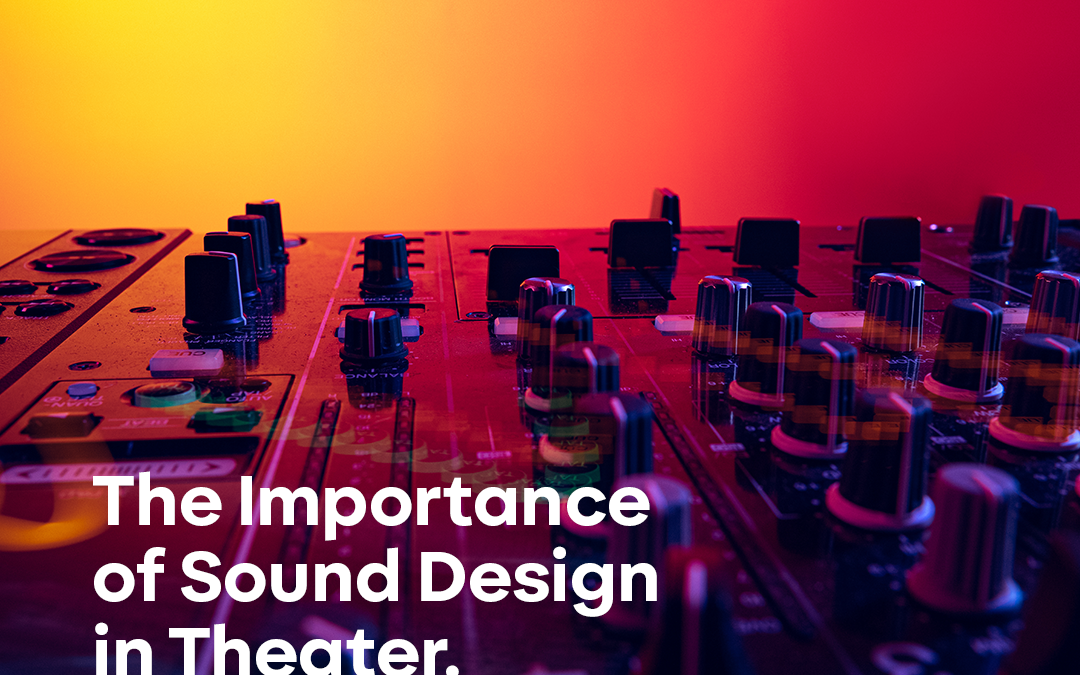Theatre is an art form that involves many different elements, such as acting, lighting, set design, and sound design. While all of these elements are important, sound design plays a particularly crucial role in creating an immersive experience for the audience.
Modern sound design in theatre involves using soundscapes, which are pre-recorded sounds mixed and played during a production. These soundscapes can be used to create complex and layered sound environments, making it possible to recreate any sound imaginable. Additionally, modern sound design involves the use of live sound effects, where the sound designer creates sounds live on stage using various tools and instruments.
In this blog post, we will explore the importance of sound design in theatre and how it can enhance the audience experience.
Setting the Mood and Tone
Sound design in theater can be used to set the mood and tone of a production. For example, a suspenseful scene can be enhanced by the use of low, ominous music, while a romantic scene can be accompanied by a soft, melodic tune. Sound effects can also be used to create a sense of realism and immersion, such as the sound of rain or thunder in a storm scene. By using sound design to create a specific atmosphere, theater productions can transport audiences to another world and fully immerse them in the story being told.
Enhancing Dialogue and Acting
Another important aspect of sound design in theater is its ability to enhance dialogue and acting. Sound designers can use various techniques to ensure that the audience can hear every word spoken by the actors, even in a large theater. This includes the use of microphones, amplification, and careful placement of speakers. In addition, sound design can be used to add depth and dimension to the voices of the actors, making their performances even more powerful and engaging.
Creating a Seamless Production
Good sound design in theater is also crucial for creating a seamless production. Sound cues need to be timed precisely to match the action on stage, whether it’s the sound of a door closing or a gunshot. If the sound cues are off even by a second, it can disrupt the audience’s immersion in the production. By working closely with the rest of the production team, sound designers can ensure that their cues are seamlessly integrated into the production, creating a polished and professional result.
Providing a Unique Experience
Sound design in theater can provide a unique experience for audiences. The use of innovative and creative sound design techniques can elevate a production from good to great, and leave a lasting impression on the audience. For example, sound designers can use surround sound technology to create a 3D audio experience for the audience, immersing them even further into the production. By pushing the boundaries of sound design in theatre, productions can create a truly unforgettable experience for audiences.
The importance of sound design in contemporary theatre cannot be overemphasized. It is no longer sufficient to rely on traditional sound design techniques that have been in use for decades. Today, sound designers must keep up with evolving technology and embrace new sound design techniques to keep up with modern theatre’s fast-paced evolution.
Sound design has a significant impact on audience perception in theatre. The use of soundscapes and live sound effects can enhance the audience’s emotional experience and create a more profound connection with the production. It can also influence the audience’s understanding of the characters and their actions, as sound can be used to highlight and emphasize specific aspects of a production.
In conclusion, sound design is crucial in creating an immersive and engaging theatre experience. From setting the mood and tone to enhancing dialogue and acting, sound design can elevate a production to the next level. By working closely with the rest of the production team, sound designers can ensure that their cues are seamlessly integrated into the production, creating a polished and professional result. And by pushing the boundaries of sound design, productions can provide a unique and unforgettable experience for audiences.



















